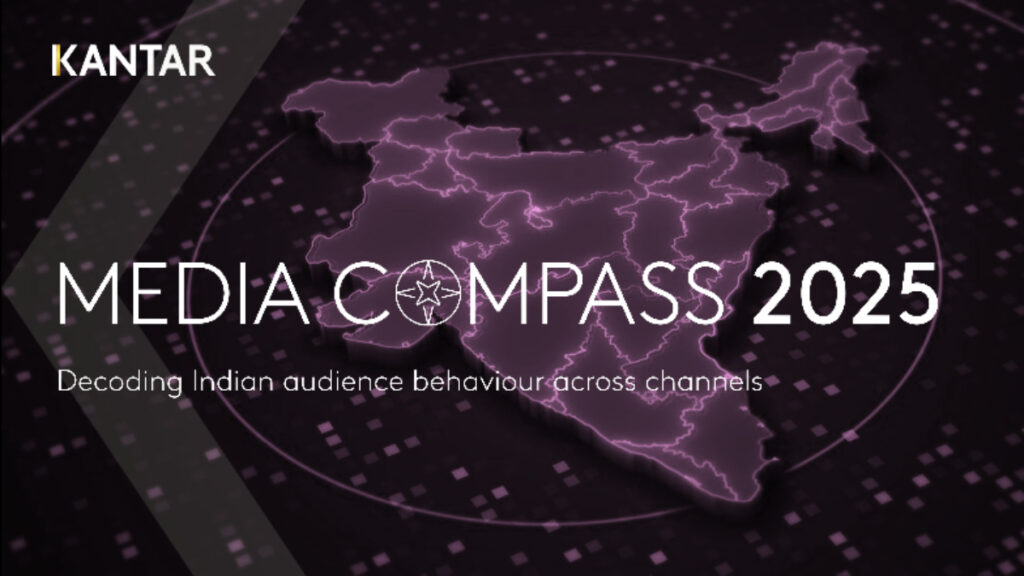The Indian media ecosystem is undergoing a rapid transformation. Yet, marketers and advertisers continue to rely on outdated, fragmented data, limiting their ability to craft effective, future-ready media strategies. With no formal or comprehensive consumer data reports in over five years to capture the evolving media landscape and shifting audience behaviour, decision-making remains imprecise, limiting its real impact.
To bridge this critical gap, Kantar India has announced the launch of Media Compass, a report offering an unparalleled 360-degree view of Indian consumers media consumption across TV, print and digital platforms.
Commenting on the report, KantarSouth Asia insights division specialist businesses director Puneet Avasthi said, “In today’s fragmented and fast-evolving media landscape, brands are under pressure to make every media rupee count. Yet, most decisions are still being made using outdated or incomplete data, leading to suboptimal media planning and missed connections with consumers. Media Compass 2025 aims to correct this and equip advertisers with timely, in-depth insights across platforms- enabling smarter media planning, stronger audience engagement and sharper targeting for maximum impact.”
Media Compass Q1 2025 highlights:
India’s media landscape is rapidly evolving, with digital consumption growing sharply across age, gender, and geography. While linear TV still commands strong reach, the rise of digital-only users and connected TV signals a shift, especially among younger, male and rural audiences. These trends highlight the need for inclusive, nuanced, and audience-responsive media strategies across platforms.
- Linear TV still dominates, but CTV adds 35 million new viewers: While 58 per cent Indians still watch linear TV every month, connected TV (CTV) has emerged as a premium channel, with 35 million incremental viewers, offering advertisers a high-value opportunity.
- One in four Indians are now digital-only: A significant 23 per cent of Indians are digital-only users. They access the internet but do not watch linear TV. This marks a pivotal shift in how India consumes content, especially the younger and rural audience.
- Linear TV continues to have a balanced gender viewership: However, both digital-only users and CTV viewers skew 57 per cent male, underlining the importance of inclusive content strategies in these domains.
- Generational divide in media preferences:
- Media habits are sharply split by age, 15 to 34-year-olds prefer digital (55 per cent), OTT (55 per cent) and social media (57 per cent).
- 45 plus year old audiences remain over-indexed on linear TV (44 per cent) as compared to internet usage, highlighting the need for age-responsive media planning
- Rural India is a media powerhouse: Digital-only (74 per cent) and linear TV viewers (75 per cent) are widely present in rural areas, breaking old assumptions. Even CTV now reaches both urban and rural audiences equally, showing it’s not just a metro trend anymore.
- Socio-economic segments show diverging trends:
- Digital-only users are over-indexed in lower NCCS groups, showing digital’s role in democratising access.
- Incremental CTV viewers are highly concentrated in NCCS A, reinforcing its position as a premium medium.
With a rolling annual sample of 87,000 consumers and quarterly reporting, Media Compass provides a comprehensive track of the media eco-system. It will deliver insights into media reach, cross-media interactions including platforms and personalities/ influencer and measures of engagement, equipping brands with the data-driven intelligence needed to craft high-impact, bespoke media strategies.


